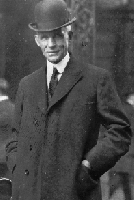
Tough Guys and Pretty Boys:
The Cultural Antagonisms of Engineering and Aesthetics in Automotive History
Introduction
The automobile is the most important technological innovation of the twentieth century. This tool of transportation has profoundly transformed the lives of people around the globe. But nowhere has it had a more profound impact than in the United States, where the modern system of automobility was pioneered. The American auto industry invented the method of mass productionthat made cars available to the majority. And this mass mobility afforded by the mass-produced car transformed every aspect of Americans’ lives, including their culture―their beliefs, desires, and values. The automobile long ago stopped being a vehicle for getting passengers from here to there, and became an embodiment of American dreams and desires―for freedom, progress, individuality. In fact, Americans’ investment of cultural meanings and desires in the automobile has increasingly impeded its development as a safe, efficient tool of transportation. Throughout the history of twentieth-century America, there has been an ongoing conflict between the car as an efficient tool and the car as a carrier of cultural dreams and values. The latter has generally won out.
This conflict between automotive utility and meaning has been expressed within the industry as a contest between two professions, each representing a different vision of the car. On one side have been the engineers, or the “tough guys.” They have fought to make cars “tough,” that is, durable, efficient, and safe tools for transporting people from one place to another. On the other side have been the stylists, or the “pretty boys.” They have fought to make cars “pretty,” that is, the carriers of cultural and aesthetic meanings beyond usefulness, the realization of Americans’ deepest aspirations and desires. This professional struggle between the “tough guys” and the “pretty boys” has been inextricably linked to and determined by broader struggles in American society―between competing firms, between workers and capitalists, between men and women. At the broadest level, the struggle between stylists and engineers is part of a historical struggle of the American people as a whole to define their culture and themselves, to decide who they are and how they should live.
Throughout the twentieth century the advantage in this battle of tough guys and pretty boys has shifted back and forth. But the general trend since about the mid-1920s has been toward the defeat of the engineers' vision of the car as a transportation tool by the stylists' vision of the car as a dream machine. Since then, technological innovations to make the car a more efficient, safe, and environmentally friendly tool have taken a backseat to aesthetic changes to make the car a more meaningful dream of power, individuality, and freedom. This defeat is part of a broader redefinition of America over this period from a society of producers to a society of consumers. Over the course of the twentieth century, through various struggles, Americans shifted their social and psychic center from producing things useful to others to consuming things gratifying to the self, from the work ethic to the consumption ethic. They ceased defining themselves by what they did, and began defining themselves by what they bought.
My automotive drama is a microcosm of this larger national drama. It has two major antagonists, symbolic generals for these opposing camps. On the side of the engineers and the work ethic is the well-known automotive icon, Henry Ford. This tough, stubborn Michigan farm boy fathered the efficient mass production of utilitarian automobiles like the Model T, and thus put America on wheels. On the side of the stylists and the consumption ethic is the less-well-known Harley Earl. This Hollywood coachbuilder for the stars fathered automobile styling, launching Americans on flights of consumer fancy far beyond earthbound utility. The curtain goes up on our drama in the early 1920s, with Ford strutting the stage as the undisputed ruler of the American automotive domain. But in order to understand how he achieved this position, we need to fill in a bit of historical background.
<<Previous Section - Next Section>>
Introduction
The Utilitarian Vision of Henry Ford
General Motors Style Overtakes Ford Efficiency
The Changing American Character
The Struggle for Styling in the Early Industry
The Depression Era Battle for Streamlining
The Triumph of Stylists in the 1950s
Contradictions of Fantastic Styling and the Stylists' Fall From Grace
Stylists Fight Back with "AERO"
Postindustrial Lifestyle Cars & The New Balance of Power Between Engineers and Designers
Complete Text Printable View
©2004 Automobile in American Life and Society


